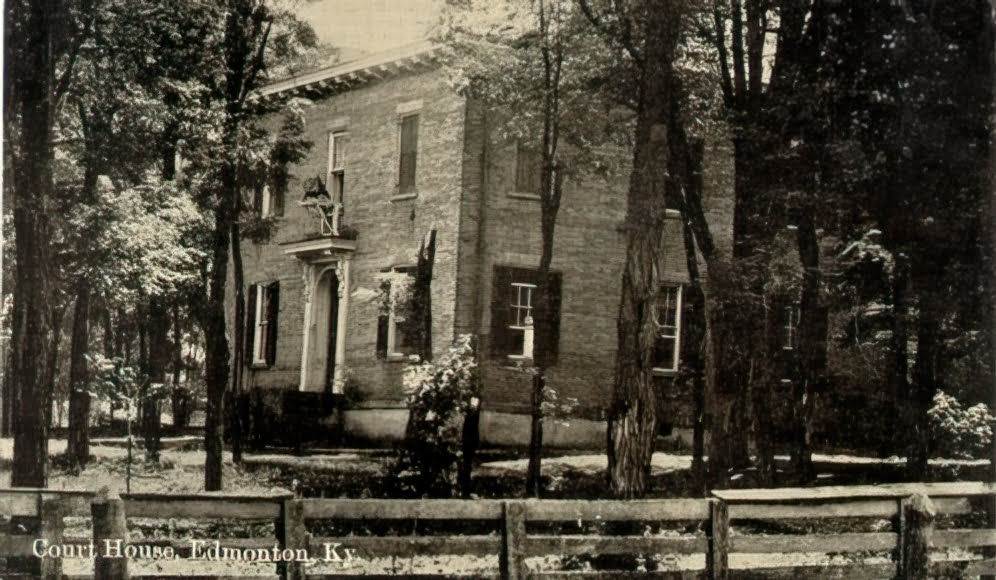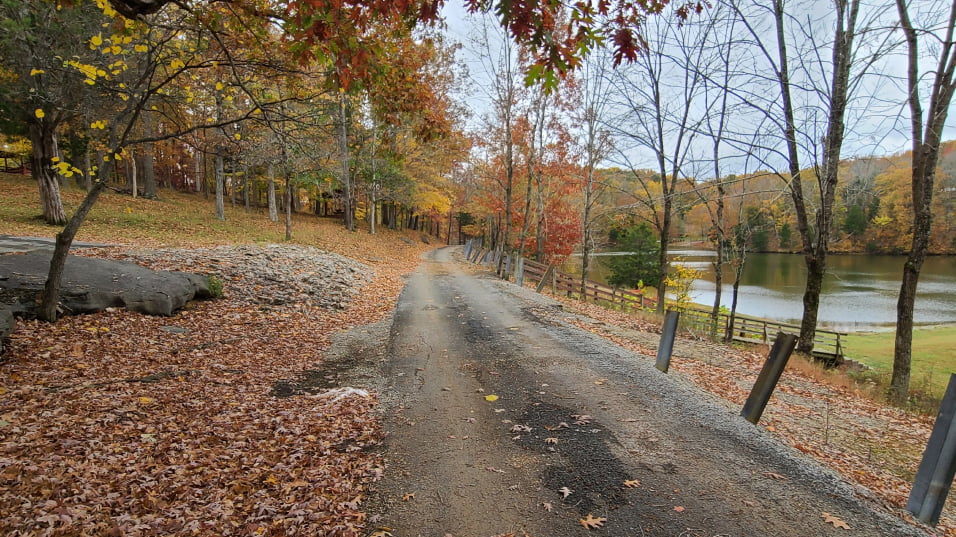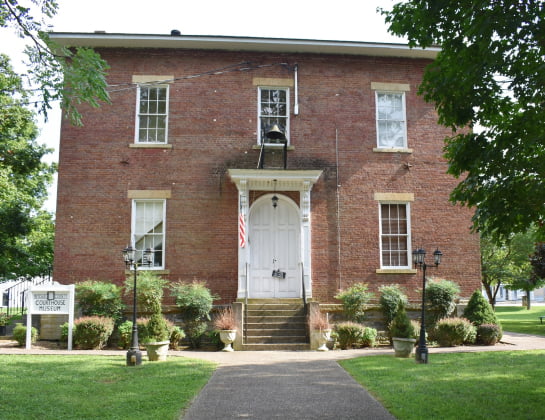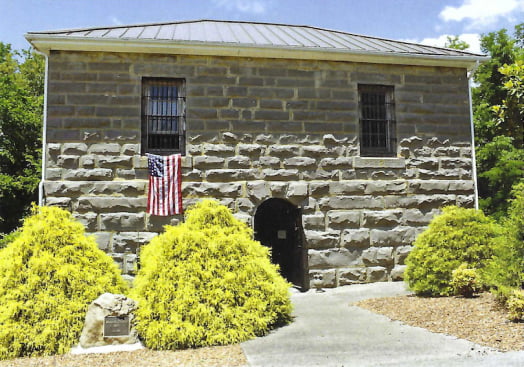History

Metcalfe County & Edmonton
Metcalfe County, formed in 1860, was named for Thomas “Stonehammer” Metcalfe, the tenth governor of Kentucky. The county’s origin is tied to a dispute over a proposed path of the Louisville and Nashville Railroad. In 1855, attempts were made by Robinson P. Beauchamp to secure the approval of the General Assembly of Kentucky for the creation of a county from eastern Barren County, but other representatives from Barren County and Glasgow defeated it. A second attempt was made in 1857, but again was defeated because of the efforts of Thomas M. Dickey of Glasgow, one of the Representatives.
In the elections of 1859, John W. Ritter and Ish Smith were elected to the Kentucky General Assembly from Barren County. Events that followed the next year resulted in the establishment of Metcalfe County. After the county was established, a location was chosen for the county seat. J. M. S. McCorkle of Green County, T. T. Alexander of Adair County and William E. Munford of Barren County were the individuals chosen to pick a site. Edmonton was named as the county seat. After disputes and re-surveys, it was found that the geographical center of the county was about 1/2 mile from the public square in Edmonton at the site of Dr. Beauchamp’s mill dam.
The brick courthouse was erected in the public square, and on March 15, 1865, approximately 60-70 of Bennett’s guerillas pillaged their way through Edmonton, burning the courthouse in their path. Tom Young made an attempt to save the county record books, but was turned back resulting in the loss of the records. By legend, one city official raced to the courthouse and saved the county’s money. He ran to his house, gave the money to his wife who ran with it out the back door to a building where slaves were doing carpentry work. She hid the money in the shavings and told the slaves to keep working. The guerillas came to the front door, forced their way in, searched her husband and threatened to torture him if he didn’t tell them where the money was. They finally gave up and left. John Will Compton was ordered to burn down the county jail or he would be killed, but he managed to escape.
The most notable site in Metcalfe County, an early landmark known to the settlers, was the Big Blue Spring which is located in the northwestern portion of Metcalfe County near the Barren County line. One of the earliest pioneers and residents in this area was Henry Skaggs, one of the “Long Hunters.” Edmund Rogers, noted soldier of the Revolutionary War, first cousin to George Rogers Clark, and founder of the county seat of Metcalfe, was a land surveyor who came to Kentucky in 1782. The land that he surveyed covered most of Metcalfe and surrounding counties. John C. Hamilton was hanged here in one of the earliest murder cases recorded in the county. He was accused of the murder of Dr. Alexander Sanderson in May of 1818. Many years later, others confessed to the murder and cleared his name.
The major communities in Metcalfe County are Center, Savoyard, Sulphur Well, Knob Lick, Beechville, East Fork, Wisdom, Randolph, Edmonton, Summer Shade, Beaumont, Subtle and Willow Shade.
Family and Consumer Sciences Extension and Homemakers
The First Homemaker Club in Metcalfe County formed in Summer Shade and received its charter on November 20, 1947. Other clubs soon followed at Edmonton, South Summer Shade, Sulphur Well, Crail Hope, Center, Wisdom, Curtis, Knob Lick, West Summer Shade, Edmonton Twilight, Mell, Pleasant Grove, Savoyard, Working Women, Town and Country, Seven Up, White Oak, Alaround, Bristle and Pioneer. Of these clubs, the Edmonton, Sulphur Well, Wisdom, Town and Country and Seven Up are still active.
The Metcalfe County Homemakers chartered by the Kentucky Extension Homemakers Association (founded in 1932) has as its main focus, to meet the changing needs of people through the informational and educational services of the University of Kentucky, College of Agriculture, Cooperative Extension Service.
In 1947, Metcalfe County became the 96th county to organize in Kentucky. Notes from the minutes of the first annual meeting of the Metcalfe County Homemakers held August 18th 1948 at the Old Edmonton School Building, include the notation: “Homemakers made $2.00 from sale of cookies for their Treasurer. There were seven clubs represented with 87 members present. Mrs. Myrtle Weldon, a state leader gave a talk entitled, “Homemaking in the Airplane Age.”
In the early days, Homemakers met to learn safer ways to preserve foods, gardening, quilting, newer sewing techniques, refinishing furniture, chair bottoming, laundry techniques especially the with the new electric irons of the day. Later there was growing interest in home-decorating, use of color in the home, making and decorating home accessories such as drapes, pillows, picture frames and wall hangings.
Currently, Homemakers place a high value on community service and volunteer countless hours in service to their communities. The community gardens at the historic court house square in Edmonton and at the Sulphur Well community park were designed and are maintained by the Edmonton and Sulphur Well Homemakers clubs.
As for the modern educational component of this organization, food and Nutrition lessons continue to be a high priority in Homemakers’ meeting. Some popular topics include feeding families healthy food, safe food preparation and wise use in spending the food dollar. Other topics that have remained popular are the management and wise investment of money, family budgets, relationships with families and others, wise use of time and energy, health and well being issues and child care. In recent years, Arts and Crafts have been of high interest to Homemakers.
The influence of the Homemakers Clubs has expanded beyond the homes of individual Homemakers and into their surrounding communities. Not only are Homemakers using their skills in their homes as mothers and caregivers, but they are now using their leadership and other skills in the workplace as teachers, merchants, lawyers, managers and many other positions.
County Extension Home Economics (Family and Consumer Sciences) Extension Agents for Metcalfe County:
Ethel Mae Paschall November 1947 – October 1957
Dorothy Morton March 1959 – April 1960
Lucy B. Forbes August 1960 – August 2005
Lynn A. Blankenship December 2005 – present
By Kelly Saderholm, Metcalfe Co. Historic Society as related to her by Lucy B. Forbes, retired Family and Consumer Sciences Extension Agent, for Metcalfe County.


The Metcalfe County Courthouse
Metcalfe County was established in 1860 from Barren, Green, Hart, Cumberland and Monroe Counties. The first courthouse was located in a dwelling built by Tommy Reid where Butler County Funeral Home now stands. It was burned down in a raid by confederate guerillas on March 15, 1865 under Capt. Jacob Bennett.
The courthouse was rebuilt on a lot where Edmonton State Bank now stands, but on July 27th 1868 it too was burned down at the hand of an arsonist. Immediately after the fire plans were made to build the third courthouse in the center of the town.
H.P. Bradshaw of Louisville was selected as the architect and on September 29, 1868 W.H. Perry received the conract as the lowest bidder. The total cost for the construction was $14,438.48.
This building served as the center of Metcalfe County government until 2017 when the county offices were moved to the new Government Center just north of the square. At that time the fiscal court awarded the Metcalfe County Historical Society the use of the old courthouse as a county museum which formally opened on August 25, 2022.

Historic Metcalfe County Jail
Metcalfe County constructed a stone jail in ca. 1861. The stone structure was used to house prisoners until the early 1980’s when the state ruled that the building was not suitable. Prisoners are now transported to the Barren County Jail at Glasgow.
The jail was constructed by stonemason John Wilson, formerly of Glasgow, Scottland, of large blocks of dense grade limestone quarried in the county and hauled by Pleasant Anderson Holland of the Foundation community.
The exact date of construction is unknown because the Metcalfe County courthouse was burned twice, in 1865 and 1868, with the loss of all county records.
A diary entry by Elizabeth (Keel) Beauchamp when she was 15 years old, stated that the guerillas under the command of Capt. Jacob Coffman Bennett of the 10th Kentucky Calvary CSA burned the courthouse and ordered John Will Compton to “set fire to the jail” or be shot. Compton managed to escape but the guerillas did release one of their numbers from the jail. The original doors were wooden, with a mass of square headed nails, likely making it the target of the fire.
The unique architecture of the jail, bringing to mind a medieval castle or Roman fortress, has decorated many a Christmas ornament, afghan and book cover. It stands as an unusual part of our local heritage, linking past and present.